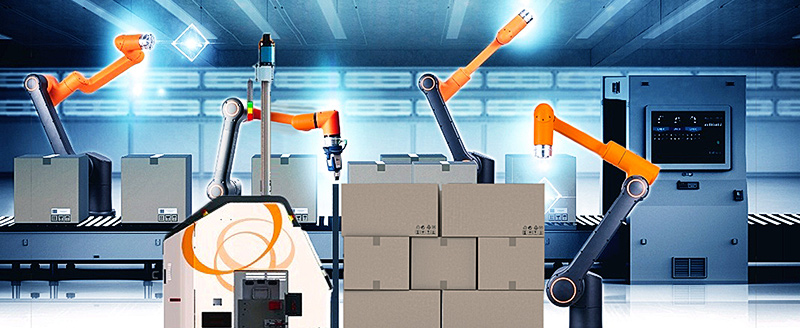
Hanwha launches new collaborative robot solutions
Hanwha has launched what it describes as “new advanced solutions”, including Hanwha Collaborative Robot Advanced (HCR Advanced) and a collaborative-robot-solutions package to continue building its momentum in the collaborative robot market that is expected to grow rapidly.
The global market for cobots was worth $1.2 billion last year, and it is expected to grow on average by 42 percent annually as more smart factories are built and the increasing demand for contactless services due to Covid-19 are expected to reach $7 billion by 2026.
In response, Hanwha is aggressively developing advanced cobots that combine Hanwha’s AI technology with its mobility capabilities. The company is integrating its robotics technology with existing logistics automation systems, secondary batteries, and display-related facilities to create synergy and satisfy the diverse needs of customers worldwide.
There are three models in the HCR Advanced Series: HCR-3A, HCR-5A, and HCR-12A. These new models retain the excellent design and versatility of the original HCR cobots while providing additional functionality. These include the ability to easily attach key functional accessories, such as force torque sensors and grippers, without the need to attach additional cables.
Additionally, the HCR Advanced Series improves workplace safety while boosting speed, consistency, and accuracy to provide better productivity to the automotive, electronics, food, and pharmaceutical industries and many others.

Some of the newly launched technologies are:
- HCR-3A, 5A, and 12A cobots can lift 3kg, 5kg and 12kg weights respectively
- Force torque sensor: a sensor that measures the interacting force between the robot and its objects
- Gripper: a tool to hold or hold like a human hand
Advanced Solutions are five additional modules that customers can pick and choose to tailor-fit their cobots according to the type of work and production processes they need done. The first of these, Robot AI 3D Vision (RAIV), is an AI visual solution for cobots that can optimize efficiency by leveraging its 3D camera and deep learning technology. Robot Visual Safety (RVS) is another solution where the speed of the robot adjusts according to the distance of its operator to ensure safety.
Hanwha also offers mobility, which combines an autonomous Laser-Guided Vehicle – of which Hanwha is the first to develop in Korea – with an Autonomous Mobile Robot to overcome the HCR Advanced’s weight limits and boost productivity.
Mobility also includes the Robot Monitoring Service (RMS), which uses Hanwha Techwin’s camera technology to monitor the cobot’s work environment and sound alarms in case of danger, as well as Robot Positioning Compensation (RPC) which makes cobots easier to use and more accurate in their work.
Kyung-Seok Ok, the CEO of Hanwha, says: “Hanwha Corporation has continued its R&D on cooperative robots to actively respond to the manufacturing automation trend following the 4th Industrial Revolution. With the launch of these new products, we will lead the popularization of collaborative robots and solidify our position in the market by providing total solutions that consider not just the products but also the needs and workplaces of our customers.”
Currently, Hanwha cobots are being promoted and sold through a global network with around 40 locations. The company first introduced its cobots in China, Korea, and Southeast Asia and is starting to gain recognition in the US and Europe, where cobots originated.
In Europe, Hanwha cobots actually lead the market for collaborative, thanks to the local subsidiaries, logistics infrastructure, and Hanwha Europe Technical Center – all based in Germany – providing a stable supply chain and timely support services for the region.
